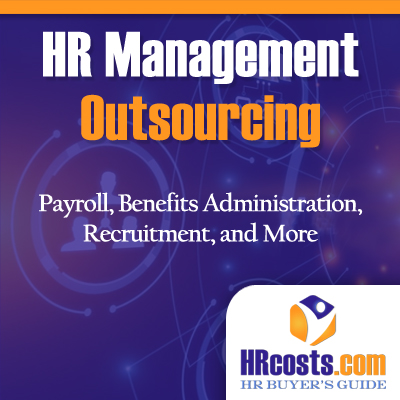
Risk Management | Outsourcing & Software Advice
Outsourcing Risk Management to a Human Resources Companies
Mitigate risks and threats to your business finance and earnings when you outsource risk management and human resources.
In the constantly evolving business landscape, risk management has emerged as a critical function to ensure organizational stability and growth. Outsourcing risk management to a Human Resources (HR) company is an increasingly popular solution for many organizations. This article will explore the concept of risk management, its types, and the benefits of partnering with an HR company for these services. Additionally, we will discuss the best risk management companies and the reasons behind their success.
What is Risk Management?
Risk management is a systematic process of identifying, assessing, and mitigating potential threats and uncertainties that could impact an organization’s goals and objectives. It involves a set of strategies, tools, and techniques to minimize the impact of risks on the organization’s operations, finances, and reputation. Effective risk management helps organizations anticipate challenges, make informed decisions, and allocate resources more efficiently.

Types of Risk Management
- Strategic Risk Management: This type involves managing risks that arise from an organization’s strategic decisions, such as mergers and acquisitions, new market entries, or changes in the competitive landscape.
- Operational Risk Management: This type focuses on risks related to an organization’s daily operations, such as supply chain disruptions, technological failures, or employee misconduct.
- Financial Risk Management: This type addresses risks associated with an organization’s financial stability, including currency fluctuations, interest rate changes, or credit risks.
- Compliance Risk Management: This type deals with risks that stem from regulatory and legal requirements, such as employment laws, data protection regulations, or industry-specific standards.
- Reputational Risk Management: This type involves managing risks that could damage an organization’s reputation, such as negative publicity, customer complaints, or social media backlash.
The Value of Outsourcing Risk Management to an HR Company
Outsourcing risk management to an HR company offers several benefits, including:
- Expertise: HR companies have experienced professionals with specialized knowledge in risk management, ensuring that organizations have access to the best practices and strategies for mitigating risks.
- Cost-Effectiveness: Outsourcing can save organizations money by reducing the need for in-house risk management teams and eliminating the costs associated with recruitment, training, and maintaining such teams.
- Scalability: HR companies can quickly scale their services to accommodate an organization’s growth or changing needs, ensuring that risk management efforts remain effective and relevant.
- Enhanced Compliance: HR companies are well-versed in the latest regulatory and legal requirements, helping organizations stay compliant and avoid potential fines or penalties.
- Objectivity: Outsourcing risk management to an HR company offers an unbiased perspective, enabling organizations to make more informed decisions and prioritize risks effectively.
Best Risk Management Companies
Some of the best risk management companies include:
Aon
A global professional services firm, Aon offers a comprehensive range of risk management services, including risk assessment, mitigation strategies, and insurance solutions. Their expertise spans various industries, and they are known for their innovative approach to risk management.
Marsh
A leading insurance broker and risk management company, Marsh provides customized risk management solutions to businesses of all sizes. They leverage their extensive network and industry-specific knowledge to help organizations navigate complex risk landscapes.

Willis Towers Watson
A multinational risk management, insurance brokerage, and advisory company, Willis Towers Watson offers a wide range of risk management services, including risk identification, quantification, and mitigation. They are known for their data-driven approach and focus on creating long-term value for their clients.
Outsourcing risk management to a Human Resources company can be a valuable strategy for organizations looking to improve their risk management capabilities. With expert knowledge, cost-effective solutions, and the ability to scale services as needed, HR companies can help organizations navigate the complex world of risk management,
How to Effectively Identify, Assess, and Mitigate Risks to Minimize Impact on Your Organization’s Operations, Finances, and Reputation
Effectively identifying, assessing, and mitigating risks is crucial to minimizing the impact on your organization’s operations, finances, and reputation. Here’s a step-by-step guide to help you manage risks efficiently:
- Establish a risk management framework: Develop a clear and structured risk management framework that outlines the processes, roles, and responsibilities for identifying, assessing, and mitigating risks.
- Identify risks: Conduct a thorough review of your organization’s internal and external environment to identify potential risks. You can use various tools and techniques, such as brainstorming, checklists, SWOT analysis, historical data analysis, and expert interviews.
- Categorize risks: Categorize risks into different types, such as operational, financial, strategic, and reputational risks. This will help you prioritize and allocate resources effectively.
- Assess risks: Evaluate the likelihood and impact of each risk using qualitative or quantitative methods. You can use tools like risk matrices, risk scores, or scenario analysis. Consider both the probability of the risk occurring and the potential consequences if it does occur.
- Prioritize risks: Rank risks based on their likelihood and impact, and prioritize them according to their significance to your organization. Focus on risks that pose the greatest threat to your organization’s objectives.
- Develop risk mitigation strategies: For each identified risk, develop appropriate risk mitigation strategies. These strategies can include risk avoidance, risk reduction, risk transfer, and risk acceptance. Ensure that the chosen strategies align with your organization’s risk appetite and are cost-effective.
- Implement risk mitigation strategies: Put the risk mitigation strategies into action by assigning responsibilities, setting timelines, and allocating resources. Monitor the progress of the implementation and make adjustments as necessary.
- Monitor and review: Continuously monitor and review your risk management processes to ensure their effectiveness. Regularly update your risk assessments and mitigation strategies to reflect changes in your organization’s internal and external environment.
- Communicate and educate: Communicate the risks and risk management strategies to relevant stakeholders, including employees, management, and board members. Provide training and support to ensure that everyone understands their role in managing risks.
- Learn and improve: Learn from past risk management experiences, both successful and unsuccessful, to improve your risk management processes. Use this knowledge to refine your risk management framework and adapt to new challenges.
By following these steps, you can effectively identify, assess, and mitigate risks to minimize their impact on your organization’s operations, finances, and reputation.
